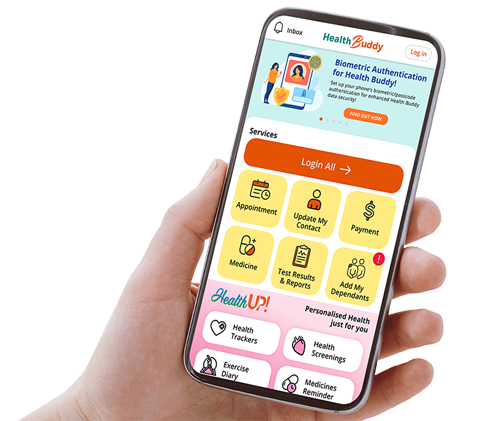National Neuroscience Institute will NEVER ask you to transfer money over a call. If in doubt, call the 24/7 ScamShield helpline at 1799, or visit the ScamShield website at www.scamshield.gov.sg.
BioNeuro-Computing
Carol Tang
Ph.D.
Principal Investigator in-charge
Edwin Sandanaraj
MSc
Co-Investigator
Contact Information
National Neuroscience Institute
11 Jalan Tan Tock Seng, Singapore 308433
Tel: (65) 6357 7616 / (65) 6357 7634 (Lab)
Fax: (65) 6256 9178
Email: carol_tang@nni.com.sg
Overview
Our newly formed division has its roots from our early industry collaboration in neuro-oncology. This collaboration focused on establishing patient stratification methods, using patient-derived xenografts and primary glioma cells. To overcome the low statistical power of primary cell lines, as with any such studies, we tapped into the large public clinical databases to form informative associations between gene activation pathways, somatic mutation profiles, clinical prognosis and imaging sequences. We established computational platforms to facilitate these associative studies (Choudhury et al, J Clin Invest, 2012; Koh et al, Antioxid Redox Signal, 2013; Ng et al, Clin Cancer Res, 2012Yeo et al, Cancer Res, 2012) .
Our newly formed division has its roots from our early industry collaboration in neuro-oncology. This collaboration focused on establishing patient stratification methods, using patient-derived xenografts and primary glioma cells. To overcome the low statistical power of primary cell lines, as with any such studies, we tapped into the large public clinical databases to form informative associations between gene activation pathways, somatic mutation profiles, clinical prognosis and imaging sequences. We established computational platforms to facilitate these associative studies (Choudhury et al, J Clin Invest, 2012; Koh et al, Antioxid Redox Signal, 2013; Ng et al, Clin Cancer Res, 2012Yeo et al, Cancer Res, 2012) .
Deployment of Informatics Strategies for Characterizing Clinical Neurological Disorders
Statistical models will be adapted for studies such as genomic, gene expression, methylation, Next-generation sequencing and microRNA analyses. These interrogation methods are common across all diseases in the various themes with focus on patient stratification and prognostic marker identification.
Synergy and Cohesion Between Disease Themes
- Systematic organization of clinical and genomics information in relational databases to explore scientific insights across neural disorders
We have initiated, for different diseases, systematic archival of prospectively collected patient material, as well as publicly available patient clinical databases with deep profiling information. We also have access to collaborative databases with other clinical centres worldwide to facilitate this platform building
- Predictive analysis on the vast amount of in-house and public repositories to identify genomics markers for providing efficacious treatment
These predictive analyses are being carried out in various studies. Information include but are not limited to qRT-PCR, methylation, microRNA, gene expression, genome copy number etc. - Molecular characterization of clinical problems through high-throughput genomics and proteomics information in order to map key elements in biological pathways
Molecular characterization of clinical problems through high-throughput genomics and proteomics information in order to map key elements in biological pathways
1. Molecular characterization of clinical problems through high-throughput genomics and proteomics information in order to map key elements in biological pathways
2. Genome-informed therapeutic strategies are viable. This forces a re-evaluation of current diagnostic approaches to identify patient cohorts based on molecular schemes for tailored therapies. - Integrative analysis on genomics/proteomics data churned out from multiple platforms to subtype patient population leading to personalized treatment
This is being put in place for brain tumors that will serve as a roadmap for other diseases. An example is the integration of gene expression, genome copy number and methylation data from The Cancer Genome Atlas to identify patient subtypes for genome-informed treatment regimens. - Exploration on potential candidates targeting aberrant pathway in neural disorders using computational approaches
Our platforms described above will enable us to build up in silico capability at identifying therapeutic targets, as well as small molecules for patient cohorts most likely to receive treatment benefit.
Selected Publications
- Choudhury Y, Tay FC, Lam DH, Sandanaraj E, Tang C, Ang BT, Wang S (2012) Attenuated adenosine-to-inosine editing of microRNA-376a* promotes invasiveness of glioblastoma cells. J Clin Invest 122: 4059-4076
- Koh LW, Koh GR, Ng FS, Toh TB, Sandanaraj E, Chong YK, Phong M, Tucker-Kellogg G, Kon OL, Ng WH, Ng IH, Clement MV, Pervaiz S, Ang BT, Tang CS (2013) A distinct reactive oxygen species profile confers chemoresistance in glioma-propagating cells and associates with patient survival outcome. Antioxid Redox Signal 19: 2261-2279
- Ng FS, Toh TB, Ting EH, Koh GR, Sandanaraj E, Phong M, Wong SS, Leong SH, Kon OL, Tucker-Kellogg G, Ng WH, Ng I, Tang C, Ang BT (2012) Progenitor-like Traits Contribute to Patient Survival and Prognosis in Oligodendroglial Tumors. Clin Cancer Res 18: 4122-4135
- Yeo CW, Ng FS, Chai C, Tan JM, Koh GR, Chong YK, Koh LW, Foong CS, Sandanaraj E, Holbrook JD, Ang BT, Takahashi R, Tang C, Lim KL (2012) Parkin pathway activation mitigates glioma cell proliferation and predicts patient survival. Cancer Res 72: 2543-2553
Keep Healthy With
© 2025 SingHealth Group. All Rights Reserved.
















